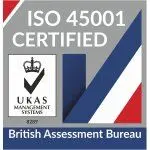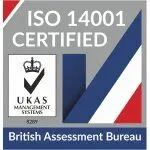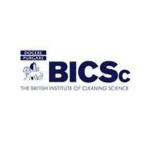
The Importance of School Cleanliness for Student Health
Overview
Introduction to school cleanliness
School cleanliness plays a crucial role in promoting the health and well-being of students. A clean and hygienic environment not only ensures the physical safety of students but also contributes to their overall academic performance. By maintaining cleanliness in schools, we can prevent the spread of germs and diseases, reduce absenteeism, and create a conducive learning atmosphere. In this article, we will explore the importance of school cleanliness and its impact on student health.
Impact of school cleanliness on student health
Maintaining a clean and hygienic school environment is crucial for promoting the health and well-being of students. The impact of school cleanliness on student health cannot be overstated. A clean school helps prevent the spread of germs and reduces the risk of infections, keeping students healthy and able to focus on their studies. Additionally, a clean and organized school environment creates a positive atmosphere that enhances student motivation and productivity. It also promotes good personal hygiene habits among students, such as regular handwashing and proper sanitation practices. Overall, prioritizing school cleanliness is essential for ensuring the optimal health and academic performance of students.
Importance of maintaining a clean school environment
Maintaining a clean school environment is of utmost importance for the overall well-being and health of students. A clean school not only provides a conducive learning environment but also helps in preventing the spread of diseases and infections. By ensuring proper cleanliness and hygiene practices, schools can create a safe and healthy space for students to thrive. A clean school environment promotes good health habits, reduces absenteeism, and enhances the overall learning experience. It also instills a sense of responsibility and discipline among students, teaching them the importance of cleanliness and its impact on their well-being. Therefore, maintaining a clean school environment is crucial for ensuring the optimal health and development of students.
Preventing the spread of germs
Regular cleaning and disinfection
Regular cleaning and disinfection play a crucial role in maintaining the cleanliness and hygiene of schools, which directly impacts the health and well-being of students. By regularly cleaning and disinfecting classrooms, hallways, and common areas, schools can prevent the spread of germs and reduce the risk of illnesses among students. This not only helps in creating a safe and healthy learning environment but also promotes better attendance and academic performance. Additionally, regular cleaning and disinfection help in removing dust, allergens, and other pollutants, which can improve indoor air quality and reduce respiratory problems. Therefore, it is essential for schools to prioritize regular cleaning and disinfection practices to ensure the overall health and well-being of their students.
Proper hand hygiene practices
Proper hand hygiene practices are crucial for maintaining a clean and healthy school environment. By regularly washing their hands with soap and water, students can reduce the spread of germs and prevent the transmission of illnesses. It is important for schools to educate students about the proper techniques of handwashing, such as using warm water, lathering soap for at least 20 seconds, and thoroughly rinsing and drying their hands. Additionally, providing hand sanitizers in strategic locations throughout the school can further promote good hand hygiene practices. By prioritizing proper hand hygiene, schools can create a safer and healthier environment for their students.
Promoting respiratory etiquette
Respiratory etiquette plays a crucial role in promoting a clean and healthy school environment for students. By teaching and encouraging students to cover their mouths and noses when coughing or sneezing, we can minimize the spread of germs and prevent the transmission of respiratory illnesses. This simple practice not only helps to protect the health of individual students but also contributes to the overall cleanliness of the school. By promoting respiratory etiquette, we can create a safer and more hygienic learning environment for all students.
Reducing allergies and asthma triggers
Removing dust and allergens
Maintaining a clean and dust-free environment in schools is crucial for the overall health and well-being of students. One important aspect of ensuring a clean environment is the regular removal of dust and allergens. Dust and allergens can accumulate on surfaces, furniture, and in the air, leading to respiratory problems and allergies among students. By implementing effective cleaning procedures and using appropriate cleaning products, schools can minimize the presence of dust and allergens, creating a healthier and more conducive learning environment for students.
Proper ventilation and air quality
Proper ventilation and air quality play a crucial role in maintaining school cleanliness and promoting student health. Adequate ventilation ensures the circulation of fresh air, reducing the concentration of pollutants and allergens. This not only improves the overall air quality but also helps prevent the spread of respiratory illnesses among students. By implementing effective ventilation systems and regular air quality monitoring, schools can create a healthy learning environment that supports the well-being of students.
Cleaning carpets and upholstery
Carpets and upholstery in schools are often subjected to heavy use and can quickly accumulate dirt, dust, and allergens. Regular cleaning of these surfaces is essential for maintaining a clean and healthy environment for students. By removing dirt and allergens from carpets and upholstery, schools can reduce the risk of respiratory problems and allergies among students. Additionally, clean carpets and upholstery contribute to a more pleasant and comfortable learning environment, promoting better focus and concentration. Therefore, it is crucial for schools to prioritize the cleaning of carpets and upholstery to ensure the overall health and well-being of their students.
Preventing pest infestations
Effective waste management
Effective waste management is crucial for maintaining a clean and healthy school environment. By implementing proper waste disposal techniques, schools can prevent the spread of diseases and minimize the risk of accidents. It is important to have designated waste bins for different types of waste, such as recyclables, organic waste, and non-recyclables. Regular waste collection and disposal should be carried out to ensure that the school premises are free from any potential health hazards. Additionally, educating students about the importance of waste management and encouraging them to practice responsible waste disposal can instill lifelong habits of cleanliness and environmental consciousness.
Sealing entry points
Sealing entry points is a crucial step in maintaining school cleanliness and ensuring the health of students. By effectively sealing any gaps or openings in the school building, we can prevent the entry of pests, dust, and other contaminants. This not only helps in creating a clean and hygienic environment but also reduces the risk of allergies, respiratory problems, and infections among students. Additionally, sealing entry points can contribute to energy efficiency by preventing drafts and air leakage. It is important for schools to regularly inspect and seal entry points to uphold cleanliness standards and prioritize the well-being of students.
Regular pest control measures
Regular pest control measures are essential in maintaining school cleanliness and ensuring the health and well-being of students. Pests such as rodents, cockroaches, and insects not only pose a threat to the physical environment but also carry diseases that can be transmitted to students. Implementing regular pest control measures, such as routine inspections, proper waste management, and targeted treatments, helps prevent infestations and keeps the school environment clean and hygienic. By prioritizing pest control, schools create a safe and healthy space for students to learn and thrive.
Creating a positive learning environment
Improved concentration and focus
Improved concentration and focus are crucial for student success. A clean school environment plays a significant role in enhancing these cognitive abilities. When students are surrounded by cleanliness, they are less distracted by clutter or dirt, allowing them to concentrate better on their studies. Additionally, a clean school environment promotes a sense of calm and order, which further aids in improving concentration and focus. Students are better able to absorb information and engage in classroom activities when their surroundings are tidy and organized. Therefore, maintaining school cleanliness is essential for creating an optimal learning environment that supports students’ ability to concentrate and focus effectively.
Reduced absenteeism
Reduced absenteeism is one of the key benefits of maintaining school cleanliness. When schools are clean and hygienic, students are less likely to fall ill and miss classes. A clean environment helps to prevent the spread of germs and diseases, creating a healthier atmosphere for learning. By reducing the number of sick days, students have more opportunities to attend classes regularly, leading to improved academic performance. Additionally, decreased absenteeism also benefits teachers and the overall school community by ensuring a more consistent and productive learning environment.
Enhanced overall well-being
Maintaining a clean and hygienic school environment is crucial for enhancing the overall well-being of students. A clean school promotes good health by reducing the risk of illnesses and infections. It creates a positive and conducive learning atmosphere, allowing students to focus on their studies without distractions. Additionally, a clean school instills discipline and responsibility in students as they learn to take care of their surroundings. Overall, prioritizing school cleanliness contributes to the physical, mental, and emotional well-being of students, ensuring a healthy and productive learning environment.
Conclusion
The importance of school cleanliness for student health
Maintaining a clean and hygienic environment in schools is crucial for the overall health and well-being of students. The importance of school cleanliness cannot be overstated as it directly impacts the physical and mental health of students. A clean school helps prevent the spread of germs and diseases, reducing the risk of illness among students. Additionally, a clean and organized learning environment promotes better concentration and focus, leading to improved academic performance. Moreover, a clean school instills good hygiene habits in students, teaching them the importance of cleanliness and sanitation in their daily lives. Overall, prioritizing school cleanliness is essential for ensuring the health and development of students.
The role of schools in promoting cleanliness
Schools play a crucial role in promoting cleanliness and maintaining a healthy environment for students. By ensuring that the school premises are clean and well-maintained, schools can prevent the spread of germs and diseases, thus safeguarding the health of students. Additionally, schools can educate students about the importance of personal hygiene practices such as handwashing and proper sanitation. By instilling these habits at a young age, schools contribute to the overall well-being and development of students. Moreover, a clean and organized school environment fosters a positive learning atmosphere, allowing students to focus on their studies and achieve their full potential. Therefore, it is essential for schools to prioritize cleanliness and hygiene to ensure the optimal health and well-being of their students.
Benefits of maintaining a clean school environment
Maintaining a clean school environment offers numerous benefits for both students and staff. Firstly, a clean school helps to prevent the spread of germs and diseases, reducing the risk of illness among students. This promotes a healthier learning environment and minimizes absenteeism. Additionally, a clean school provides a more pleasant and inviting atmosphere, which can positively impact students’ morale and motivation. It also creates a conducive environment for learning by reducing distractions and promoting focus. Moreover, a clean school reflects the importance of hygiene and instills good habits in students, teaching them the value of cleanliness and responsibility. Overall, maintaining a clean school environment is crucial for promoting student health, well-being, and academic success.






